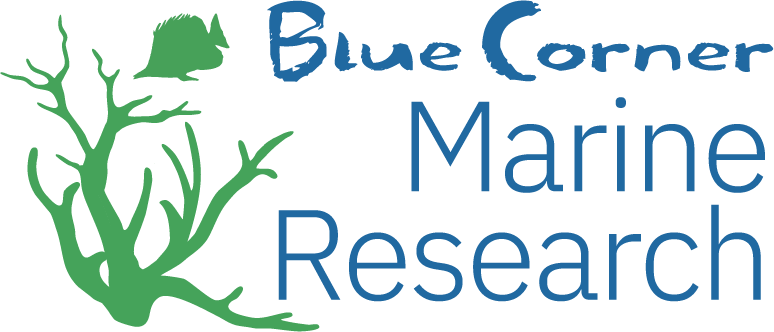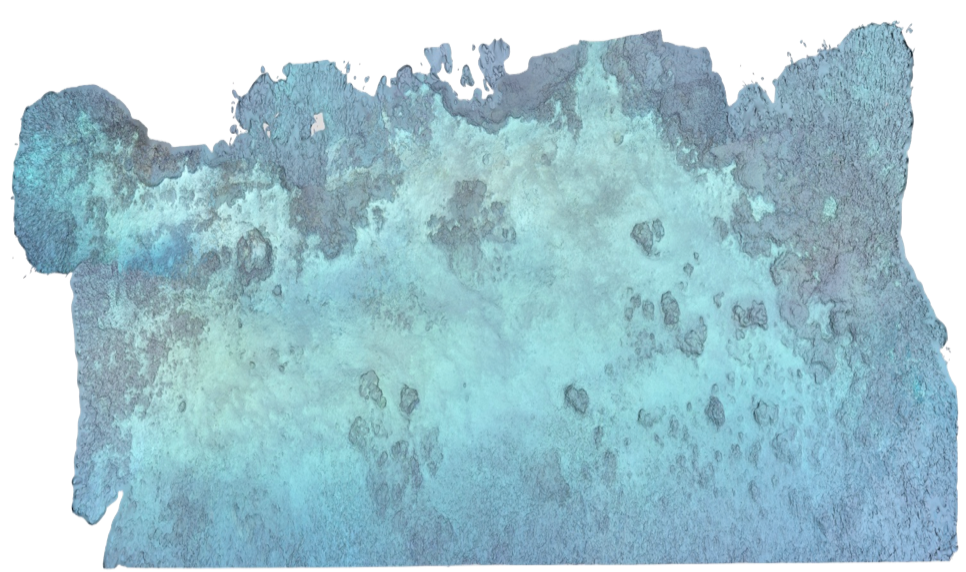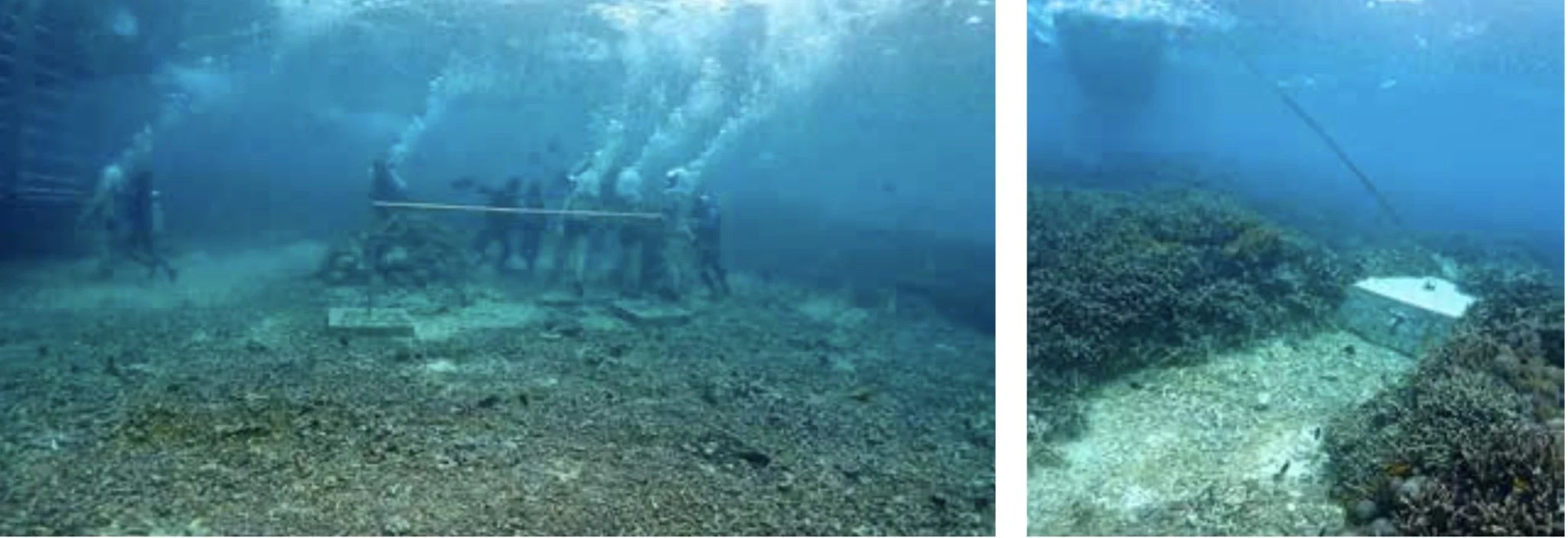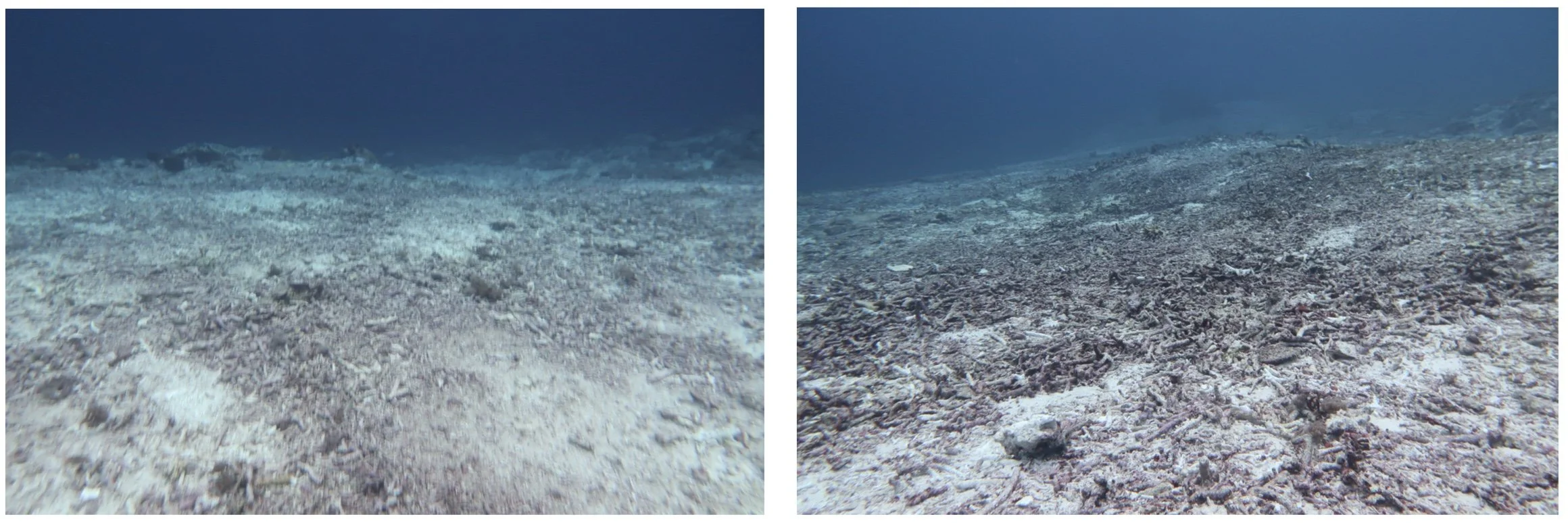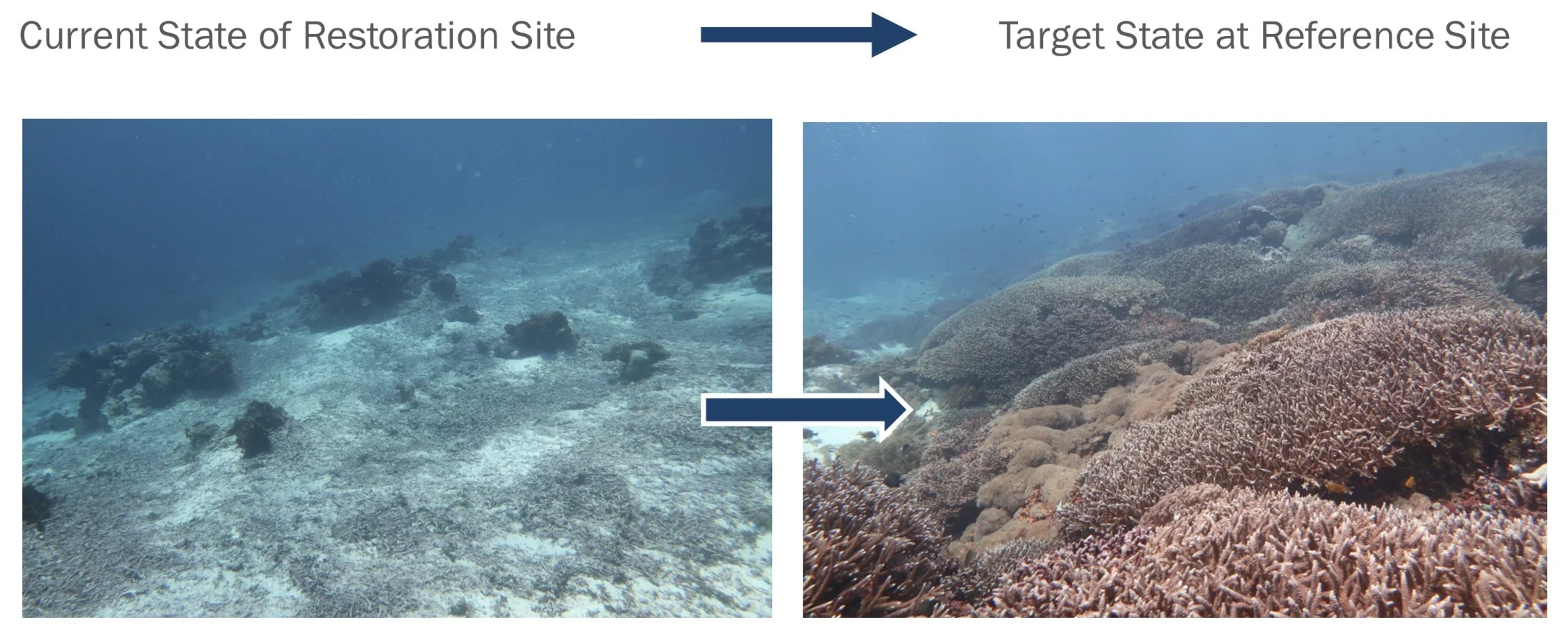Mangrove Reef Coral Restoration Project
Mangrove reef is located on the northern coastline of Nusa Lembongan island. It is one of the most biodiverse reefs with the highest coral coverage in the area. This high current reef has a gentle slope provide vast transitions between zones of the reef and therefore a huge diversity of coral and reef organisms within each of those zones. Additionally, it’s proximity to the islands’ mangrove forested area act as a nursery for many juvenile fish. Mangrove Reef is arguably the most ecologically important reef in the Nusa Islands – acting as a refuge for the highest number of different coral species in the area.
Marine charts of Nusa Islands showing location of proposed new “Mangrove Reef” coral restoration site. Also shown is location of Blue Corner’s ongoing Sental Reef restoration site. (source: Navionics)
Mangrove Reef is an economically important reef for the marine tourism industry of the Nusa Islands, as it is a popular snorkel and dive destination. Additionally, the reef provides a food source for sustenance fishing of the local community. While much of the reef remains healthy, some large degraded areas are located at the eastern end.
Photogrammetry of impacted coral rubble area at Mangrove Reef. Created with images taken September 2023.
Description of Impacts
Initial causes of coral rubble at Mangrove Reef is from mechanical damages including the following impacts:
Anchors dragged from various types of boats including fishing boats, dive & snorkel boats, and pontoons
Clearing of coral from the reef flat for seaweed farming, which removed the natural structure of the reef and changed onshore energy
Clearing coral areas for pontoon tourism - high intensity package tourism in the area has become popular. Until 2020 about 12 floating tourist rafts each offering sea- walking and other watersports were anchored along Mangrove Reef. The rafts shade areas of reef and operators clear adjacent areas of reef for underwater reef- walking activities.
Mangrove Reef had two major ship groundings during the last 10 years (a barge carrying electricity cables, and an inter-island car ferry) both of these groundings caused severe damage to the reef with broken coral rubble.
Dragging of fishing nets and traps across reef flat – during the Covid19 Pandemic from 2020-2022 the area became intensively fished as local residents had no income from tourism and little other means to eat.
Baseline Assessment of Site
Initial surveys of the Mangrove Reef site in 2023 showed benthic substrate composition of almost 100% dead coral rubble in the impacts areas. A large area of broken and dead coral rubble has formed on an area of gently sloping reef along the north-east coastline of Nusa Lembongan. As seen in many areas of SE Asia, when reef areas turn to rubble they are rarely able to recover naturally back into a functioning coral reef (Fox et al. 2003). Rubble areas have actually been increasing in size due to erosion in currents and smothering of adjacent and down-slope reef area.
Restoration Goals
The restoration plan for Mangrove Reef will take place in four main steps:
The initial baseline studies will be done on the site and adjacent reference site;
Improve the physical conditions and structure of the site;
Restore biological features of the ecosystem by restocking key substrates (hard
coral species) and encouraging settlement of secondary species
Monitor and maintenance of the restoration site
NEXT STEPS
In 2024 Blue Corner started the permitting process and baseline survey for the site which included:
Mapping & Photogrammetry of the restoration site
Establishing permanent transect for fish/substrate/invertebrate surveys
Stationary video surveys of fish at site
Quadrat surveys of substrate
In 2025 Blue Corner will focus on stabilizing the rubble substrate and transplanting select coral species for ecosystem restoration.
You can help!!
Sign up for one of our coral restoration workshops and assist our local marine biologists underwater at the restoration site
Donate to the coral restoration project below:
